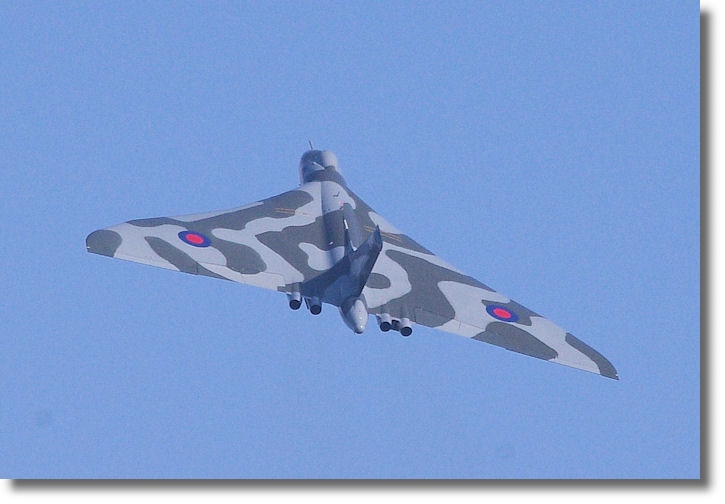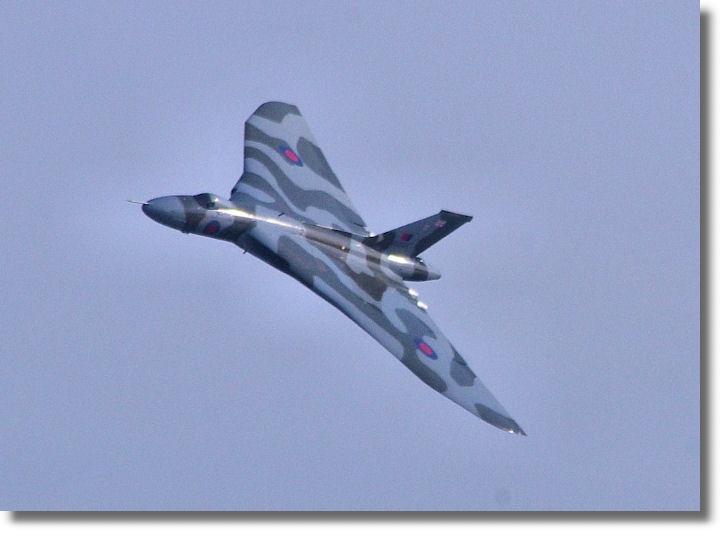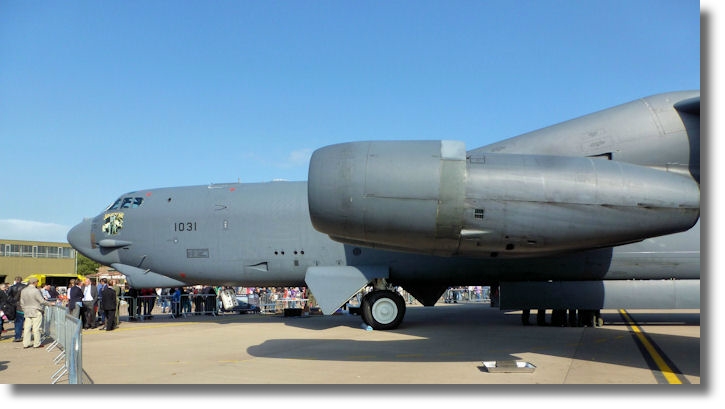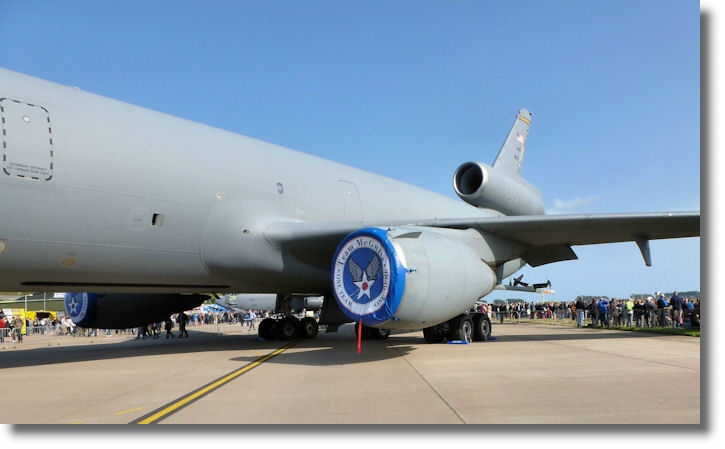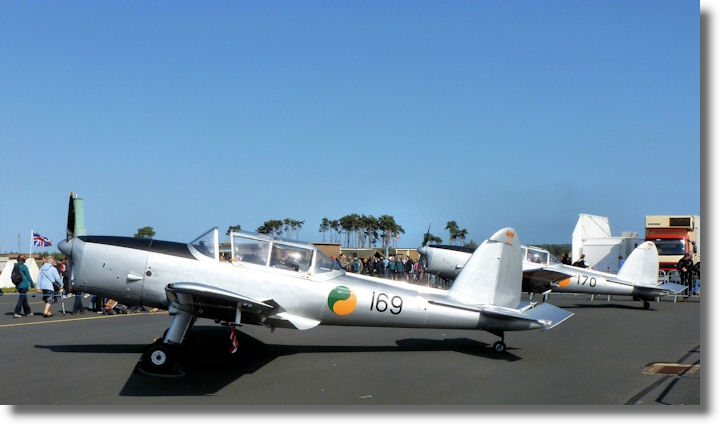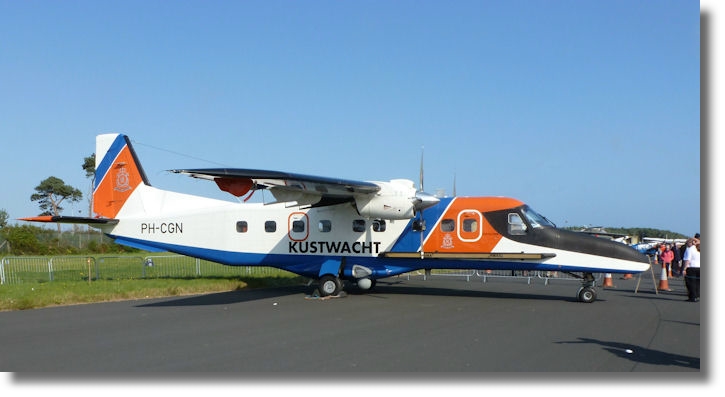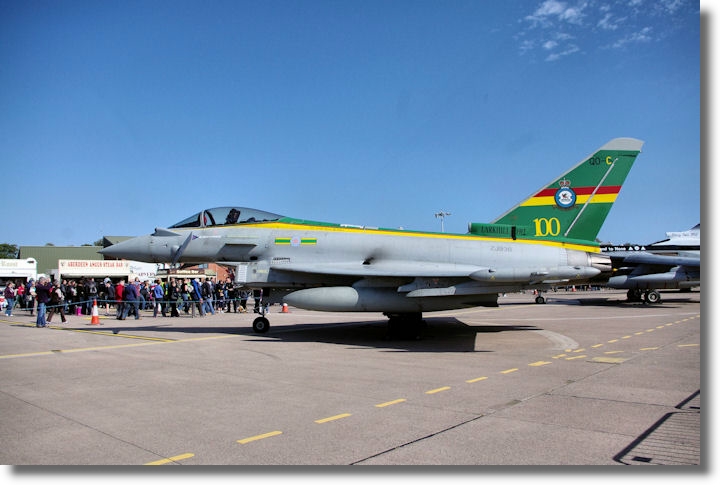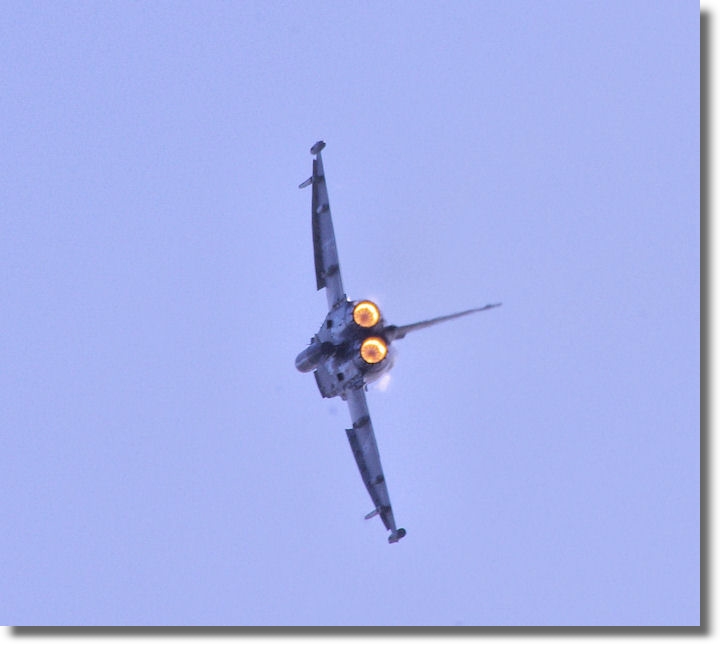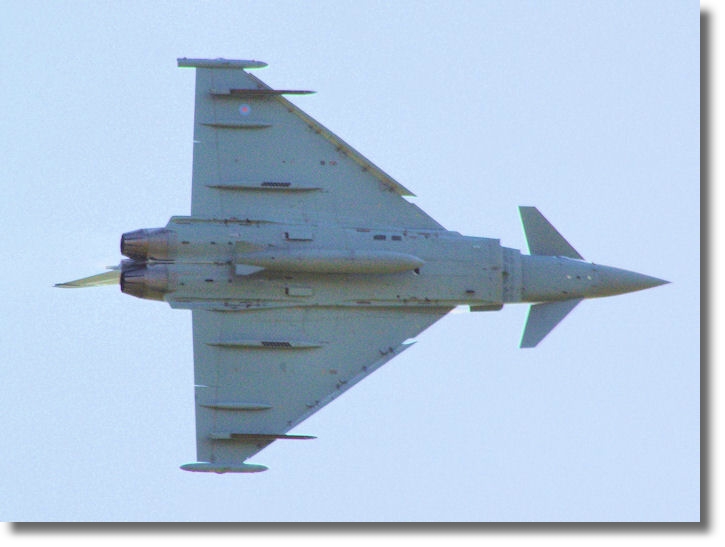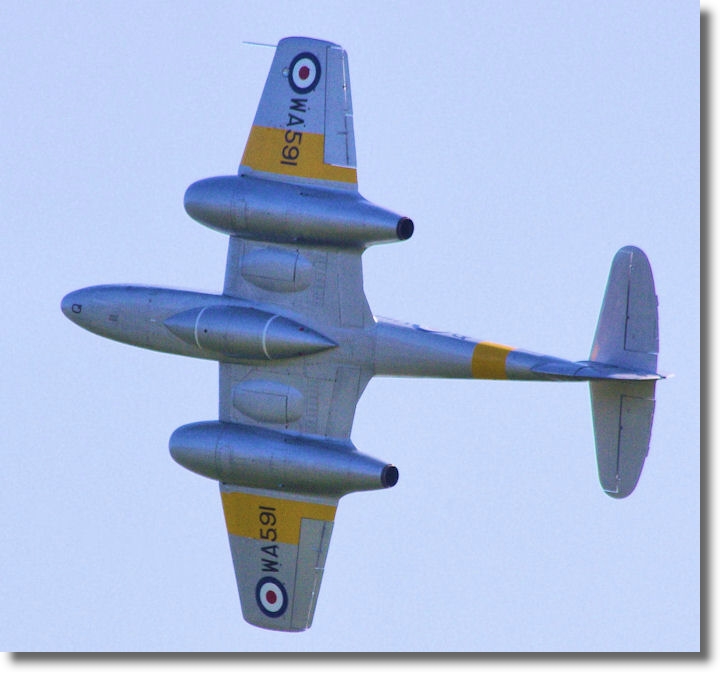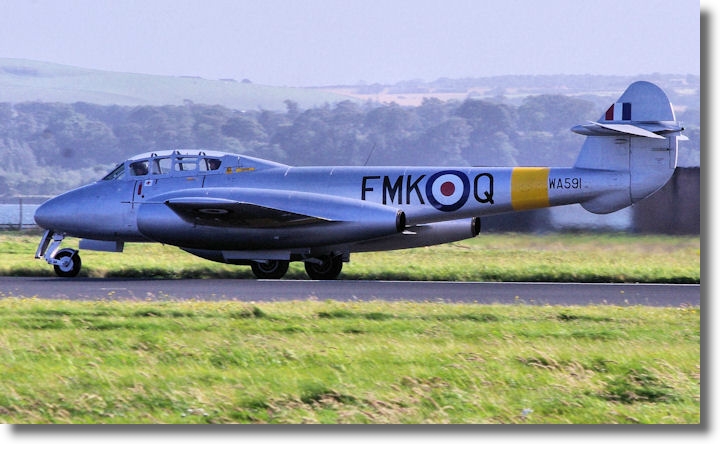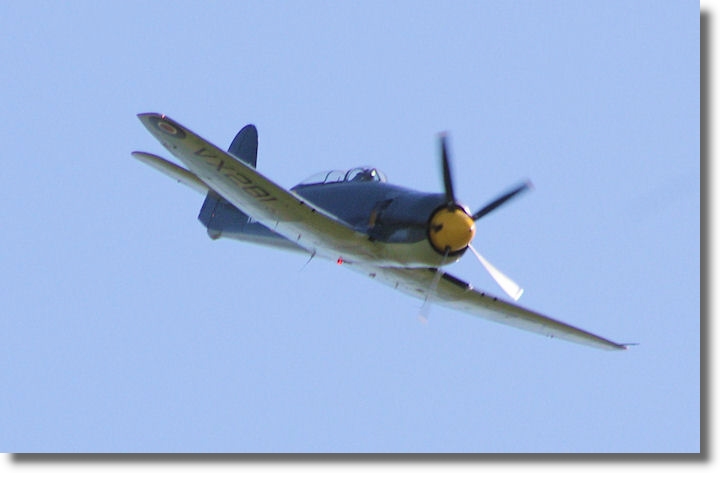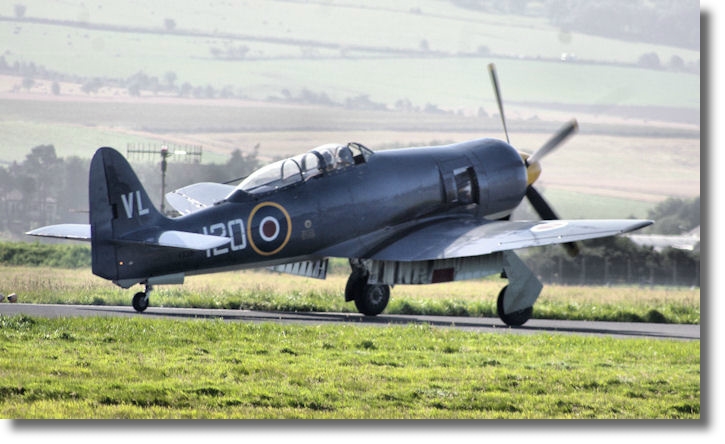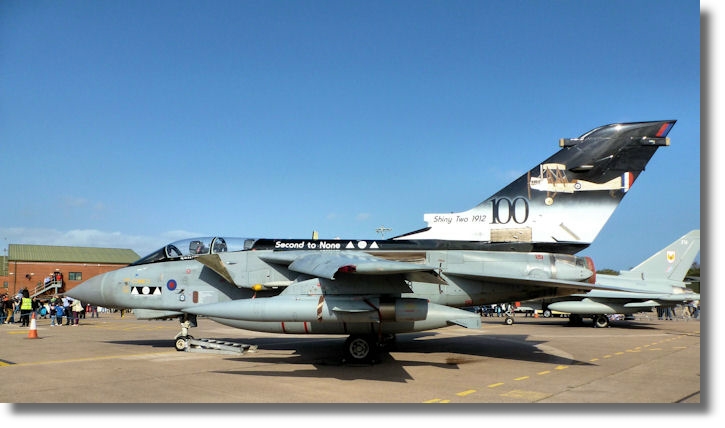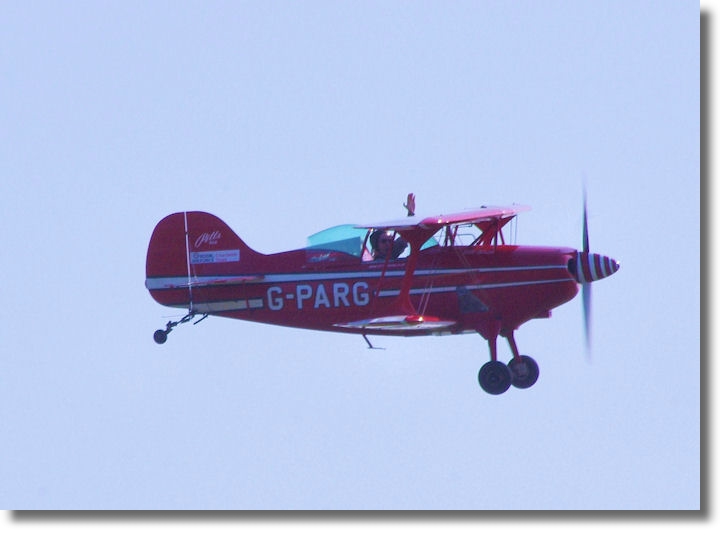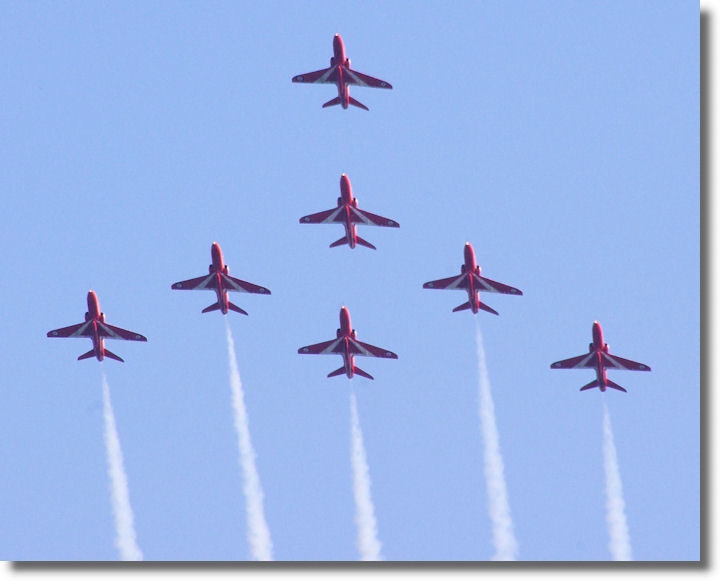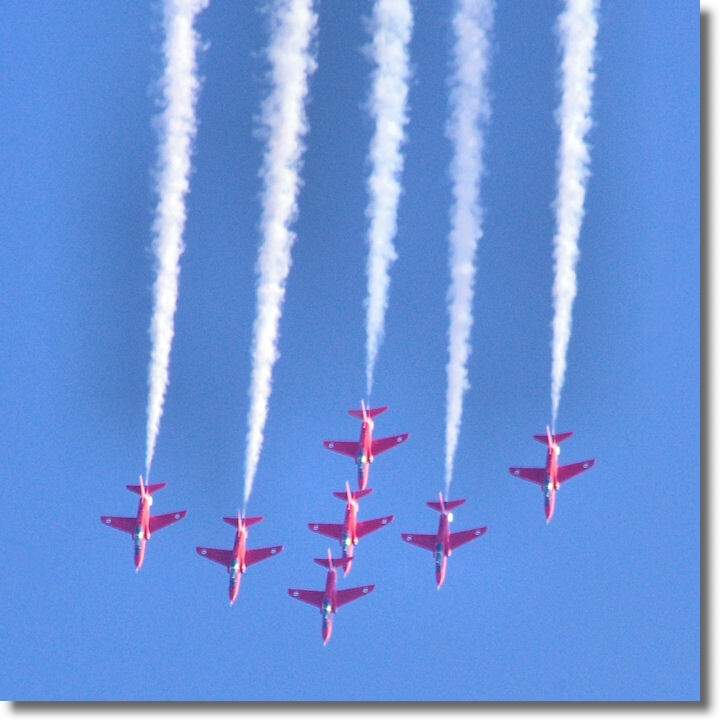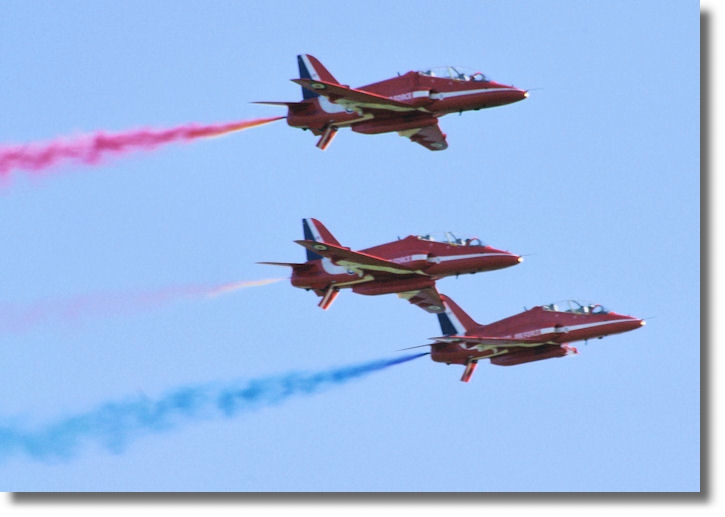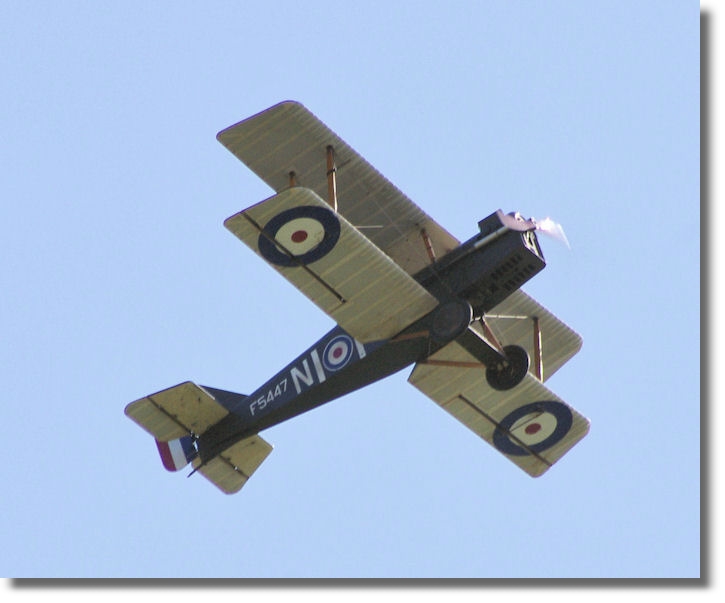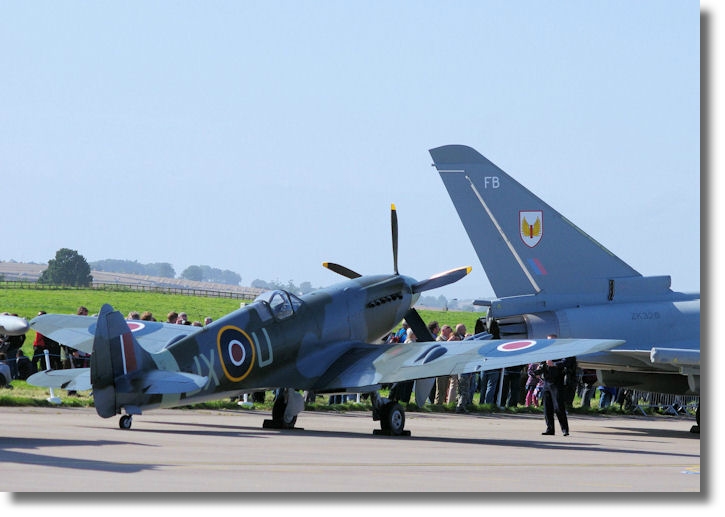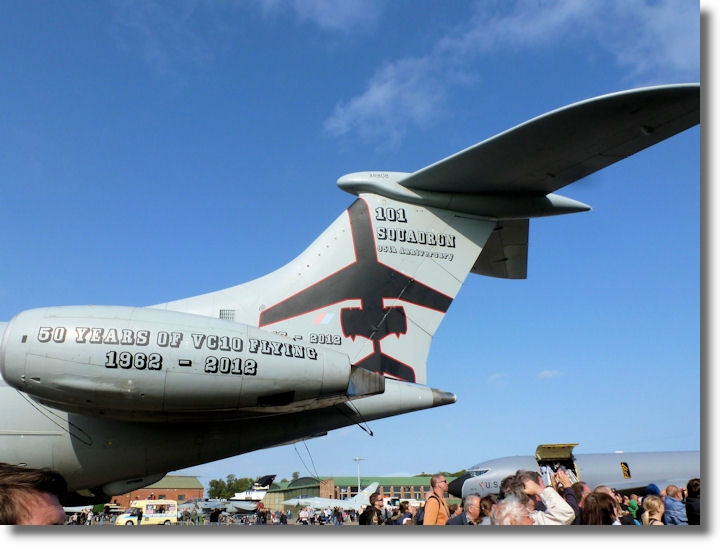Scottie's Monthly Photo Diary
- Battle of Britain Air Display, Leuchars, September 2012
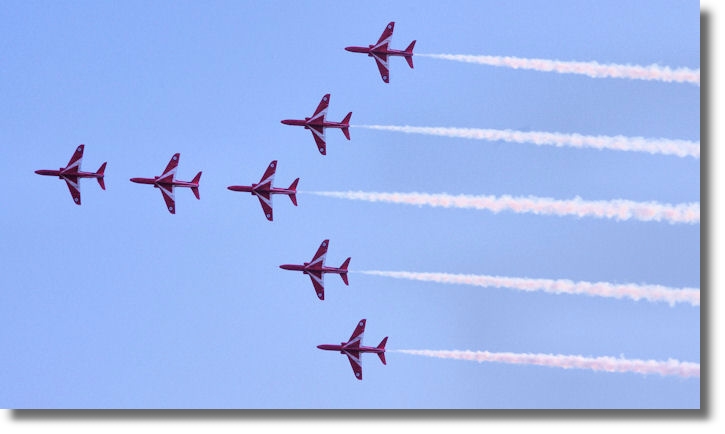
Red Arrows Aerobatic Display Team
Background
I never go anywhere in Scotland without my camera and I take photographs wherever I go. Sometimes I go somewhere specifically to take photographs with a view to adding another page to the Rampant Scotland site. On other occasions I just see something that makes an attractive picture or else it's another graphic to add to the library to perhaps use on a future occasion. But this is a selection of the best photographs I took at the Battle of Britain Air Display at Leuchars in Fife on Saturday, 15 September 2012, with a commentary on each one.
The Avro Vulcan first flew in 1952 and was the backbone of the UK's nuclear deterrent force from the late 1950's and through the 1960s. The aircraft and crews were on standby to scramble within two minutes in the event of an attack by USSR forces. At the time, it was the most advanced of the UK's "V-Bomber" nuclear deterrent force, superseding the Valiant and Victor. It was still operational in 1982 when Argentina invaded the Falkland Islands. By using mid-air refuelling (using Victor bombers converted to a flight refuelling role) the Vulcans flew missions from the UK to drop conventional bombs on the airfields at Port Stanley, the capital of the Falkland Islands.
After retiral from RAF service, one example was kept in flying condition by the RAF until 1993 when it was sold to a private owner. Following an appeal for funds from the general public and a successful application to the Heritage Lottery Fund, XH 558 underwent a multi-million pound restoration and flew again in 2007. It is now part of the air-show circuit, operated by the Vulcan to the Sky Trust. It needs £2 million a year to keep it flying - and much of that is raised by donations from the public.
The B52H Stratofortress is another venerable aircraft, having made its maiden flight in 1952. Over the years it has been upgraded several times. This example is a B52H and still forms part of the US nuclear deterrent force. Due to its low operating costs (and reliability) compared to more recent aircraft such as the B-1B Lancer and B-2A Spirit, the USAF plans to keep the Stratofortress in service until about 2045, by which time the type will have seen an incredible 90 years of active service. The example in this year's display comes from the 2nd Bomb wing at Barksdale Air Force Base in Louisiana, part of the USAF's Global Strike Command.
The KC-10A Extender is a military version of the McDonnell Douglas DC-10 passenger airliner. It entered service in 1981 to augment the USAF's KC-135 fleet. In addition to its in-flight refuelling role it can carry 75 passengers and a large amount of cargo. Its air refuelling capacity is twice that of the earlier KC-135. There are 59 examples in service and this aircraft in the static display is from the 78th Air Refuelling Squadron which is part of the 514th Air Mobility Wing, Air Reserve Command, from McGuire-Dix-Lakehurst, New Jersey.
When I first saw this de Havilland Chipmunk in the colours of the Irish Air Corps I wryly wondered if the financial crisis in that country had resulted in severe cut-backs in their air force... I later discovered that in fact, the Irish Air Corps operates only a few helicopters, maritime patrol aircraft and VIP transports. The Chipmunk primary trainer first entered service in the UK in 1950 with the university Air Squadrons. all but two Chipmunks have been retired from RAF service - these remaining aircraft provide conversion and continuation training for Battle of Britain Memorial Flight pilots on tail-wheel aircraft. Many ex-RAF Chipmunks are now in private hands. These two Chipmunks were at one time in RAF service but have been painted just as they would have looked when the type entered service with the IAC in 1952, with a green and orange roundel and a tricolour of green, white and orange stripes under each wing. The aircraft are now privately owned.
This Dornier Do228-212 is operated by the Netherlands Coastguard who have two of these aircraft based at Amsterdam's Schipol Airport. Their main duties include Search and Rescue support and enforcement of national and international maritime laws. This was the first time that an aircraft from the Netherlands Coastguard had appeared at the Leuchars Airshow.
The English Electric Lightning was the first aircraft in RAF service capable of exceeding the sound barrier in level flight - it was eventually capable of cruising at Mach 2. It became operational in 1960 and, at its peak, there were 150 Lightnings in service with nine frontline RAF squadrons. The Lightning was renowned for its capabilities as an interceptor and pilots commonly described it as "like being saddled to a skyrocket". The high speeds and inadequate fuel capacity, however, considerably limited its range as an interceptor. Following retirement in the late 1980s, many of the remaining aircraft became museum exhibits. This example, in the markings of 111 squadron, has been a "gate guardian" at Leuchars for many years.
The Eurofighter Typhoon is built by a consortium of manufacturers based in UK, Germany, Italy and Spain. It is a twin-engine canard-delta wing multirole aircraft capable of reaching over twice the speed of sound (Mach 2). In addition to the British Royal Air Force, the Typhoon has entered service with the Austrian Air Force, the Italian Air Force, the German Air Force, the Spanish Air Force, and the Royal Saudi Air Force. The Eurofighter prototype first flew in 1994 and the lengthy development period has been adversely affected by political indecision over many years. It did not begin service with the RAF until 2003, 54 months later than earlier target dates and the total cost of the project to the UK alone was estimated to have reached £20 billion. Since then the Ministry of Defence have refused to release updated cost estimates on the grounds of 'commercial sensitivity'. However in 2011 the National Audit Office estimated the UK's "total programme cost would eventually hit £37 billion".
The flying display was given by Paisley-born Squadron Leader Scott Loughran who showed off the high speed climbing and manoeuvrability in an exciting - and very noisy - display!
The aircraft used in the flying display comes from 6 squadron of the RAF which reformed officially on the day of the Battle of Britain Air Display t Leuchars. It joined 1 squadron's Eurofighters already flying from the Leuchars air base but they will both be moving to Lossiemouth as part of a reduction in the number of RAF airfields - the move to the northern location has put a question mark over the future of the annual air display in Scotland as Leuchars will become an army base once the move has taken place.
While the Typhoon is the latest jet aircraft for the RAF, the Gloster Meteor was the first. It first flew in March 1943 and it was operational with 616 squadron in July the following year - a somewhat faster timescale than the Eurofighter! It was used initially to chase and destroy the German V1 rockets heading for London. The first "kill" was achieved by using its wingtip to put the V1 rocket into a spin after its 20mm cannon jammed! The Meteor served with the RAF and the Royal Australian Air Force in the Korean War but were out-classed by the Russian-built MiG-15s. This example is a surviving Meteor T7, the first jet trainer to go into RAF service. It had a surprisingly good performance for a trainer and had a rate of climb superior to that of the operational version at that time. While it did not have the speed (or noise!) of the Eurofighter it still gave a good account of itself in the flying display.
In RAF service the Meteor was used as an advanced trainer for the conversion of pilots who had earned their "wings" on the North American Harvard at that time. The T7 is powered by two Rolls Royce Derwent engines each giving 3,600-lb of thrust giving a maximum speed of 586mph and an initial climb rate of 7,600 feet a minute
The Hawker Sea Fury served from 1946 to 1954 and was the last piston-engined fighter in first-line squadrons of the Fleet Air Arm. The Sea Fury saw action in the early part of the Korean War, mainly in the ground attack role. It did get involved with the faster jet-powered MiG-15 and coped very well, despite its slower speed. The Sea Fury T20, has a maximum speed of 445mph at 20,000 feet (370mph at sea level). 60 of the Sea Fury T20 aircraft were originally delivered to the Fleet Air Arm. It gave a sterling aerobatic performance at the air show.
The example in the flying display was the two-seat trainer version, built in 1949. It is part of the Royal Navy Historic Flight based at Royal Naval Air Station, Yeovilton, in the South of England. The Historic Flight also operates other British-built naval aircraft including the Swordfish biplane and the Sea Hawk early jet fighter.
The Panavia Tornado is a family of twin-engine, variable-sweep wing combat aircraft, which was jointly developed and manufactured by the United Kingdom, West Germany and Italy. It first flew in August 1974 and was introduced into service in 1979–1980. The aircraft was capable of undertaking missions in the tactical strike, reconnaissance, air defence, and maritime roles. This Multi-role Combat Aircraft (MRCA) thus replaced several different aircraft then in use by the partner nations. It was also sold to Saudi Arabia. The Tornado was used by the Royal Air Force, Italian Air Force and Royal Saudi Air Force during the 1991 Gulf War, in which the Tornado conducted many low-altitude penetrating strike missions. It also operated in the conflicts in the Bosnian and Kosovo Wars, the Iraq War, Libya during the Libyan civil war, as well as smaller roles in Afghanistan and Yemen. Including all variants, a total of 992 aircraft were built. This twin-engined, swing-wing aircraft was originally designed to excel at low-level penetration of enemy defences. The mission envisaged during the Cold War was the delivery of conventional and nuclear ordnance on the invading forces of the Warsaw Pact countries of Eastern Europe. Variable wing geometry allowed for a good level of lift of a heavily loaded aircraft at take off and cruise but minimal drag during the critical low-level dash towards the target. This aircraft in the static park is from No 2 squadron of the RAF which was first formed in May 1912 as one of the original squadrons of the Royal Flying Corps (RFC) and so is celebrating its 100th anniversary. The Tornado has been painted accordingly - with a picture of an early WW1 biplane on its tail.
I last saw a Pitts Special performing at the Heart of Scotland air display at Scone in June 2009. Curtis Pitts began the design of a single-seat aerobatic biplane in 1943–1944 but the design has been refined continuously since the prototype's first flight in September 1944. However, the current Pitts S2 "Special" remains quite close to the original in concept and in design. The biplane wings and excellent power to weight ratio has meant that the Pitts biplanes dominated world aerobatic competition in the 1960s and 1970s and it is still a potent aerobatic aircraft and it gave the crowd at Leuchars a thrilling demonstration of its capabilities.
No air display in the UK would be complete without a performance by the immaculate and thrilling "Red Arrows" (officially known as the Royal Air Force Aerobatic Team). It was formed initially in late 1964, replacing a number of unofficial teams that had been sponsored by RAF squadrons. The Red Arrows motto is "Éclat", a French word meaning "brilliance" or "excellence".
Initially, the Red Arrows were equipped with seven Folland Gnat trainers inherited from the RAF Yellowjacks display team. This aircraft was chosen because it was less expensive to operate than front-line fighters. In their first season, they flew at 65 shows across Europe. In 1966, the team was increased to nine members, enabling them to develop their trademark "Diamond Nine" formation. In late 1979, they switched to another two-seat trainer, the BAE Hawk. The Red Arrows have performed over 4,000 displays worldwide in 52 countries.
Since 1966, there have been nine display pilots each year, all volunteers. To be eligible, pilots must have completed one or more operational tours on a fast jet, have accumulated at least 1,500 flying hours and have been assessed as above average in their operational role. Even then, there are more than ten applicants for each place on the team. Pilots stay with the Red Arrows for a three-year tour of duty. Three pilots are changed every year, so that there are always three first year pilots, three second year pilots, and three in their final year.
On 2009, it was announced that the Red Arrows would include their first female display pilot. Flt. Lt. Kirsty Moore joined for the 2010 season. She is not the first female to apply to become a Red Arrow pilot, but is the first to be taken forward to be part of the team. She initially joined the RAF in 1998 and has been an instructor on the Hawk aircraft at RAF Valley. She also flies the Tornado aircraft at RAF Marham. The Hawks are modified with an uprated engine and a modification to enable smoke to be generated when diesel is mixed with a coloured dye and ejected into the jet exhaust to produce either red, white or blue smoke.
The Royal Aircraft Factory SE.5a was one of the most successful British fighter aircraft of the First World War. It was specifically designed so that the minimum of flying training was required for new pilots to fly the aircraft on the front line. It entered service as the SE.5 in April 1917 but by the summer of that year a more powerful 200hp engine became available and with this power plant the aircraft became the SE.5a. Well over 5,000 SE.5as were produced. As well as being a successful fighter, the SE.5a was also used for close support, armed with lightweight bombs. The aircraft at the air how is actually a replica of the Se.5A.
Although larger numbers of the Hawker Hurricane were involved in the Battle of Britain in August/September 1940 (accounting for 60% of the RAF's air victories in the battle), it is the legendary Supermarine Spitfire that is best remembered from that conflict. The Spitfire first flew in 1938 powered by Rolls Royce Merlin engines. Unlike the Hurricane which had a fabric skin, the Spitfire was largely covered in aluminium alloys on a steel frame. By the time production ended , over 20,000 Spitfires and over 2,500 naval Seafires had been built.. only a few remaining aircraft remain air worthy, including five examples operated by the Battle of Britain Memorial Flight. Spitfire LA255, a Spitfire F21, however, is preserved on the ground by No 1 Squadron at the RAF base at Cottesmore.
You might have thought that the RAF would keep quiet the fact that an aircraft in current RAF service that is 50 years old. But not a bit of it - as the tailplane of this Vickers VC10,narrow bodied jet airliner proudly proclaims that the type first flew 50 years ago. Initially built as a jet airliner for long-distance routes by BOAC (now British Airways) from hot and high airports in Africa, 14 VC10 aircraft were ordered by the RAF as a strategic transport. It first entered service with 10 squadron in 1966. In the 1970s, 9 redundant commercial VC10s were converted into air to air refuelling tankers for the RAF. Further former BOAC Super VC10s were also converted to tankers. Current plans call for the Vickers VC10s to be withdrawn from service by March 2013.
If you want to read the other Diary entries going back to 2009, there is an Index page.
